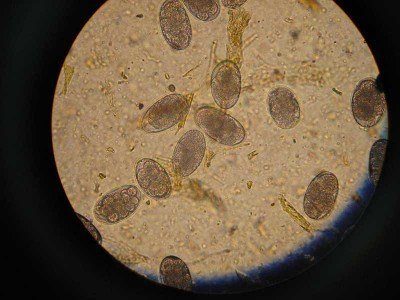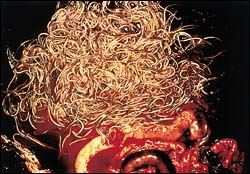
You will find two types of redworm (Strongyles) found in the horse – small and large.
SMALL REDWORM OR CYATHOSTOMINS
Small redworm are the most common and arguably most dangerous parasite threat to horse health. They have a very quick lifecycle (as little as five – six weeks) and reproduce in large numbers; 95% of parasite burdens found in horses are small redworm. As well as large populations of adult redworm being problematic to the horse, cyathostomes also have an unusual developmental stage, where the larvae of some species burrow into the horse’s gut wall and encyst with the potential of causing serious consequences when they re-emerge. The small redworm is up to 2.5cm long, thin and usually reddish in colour (the unfed worms appear white).
LARGE REDWORM OR STRONGYLUS VULGARIS
While large redworm have the capability to cause more damage in the horse, their numbers have been vastly reduced over the last 40 years due to modern worming regimes. They have a migratory larval stage that can cause blockages in blood vessels, damaging vital organs and triggering life threatening hemorrhages and internal bleeding. The large redworm is a darker red and bigger than the small redworm at up to 5cm long.

